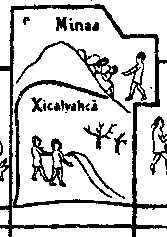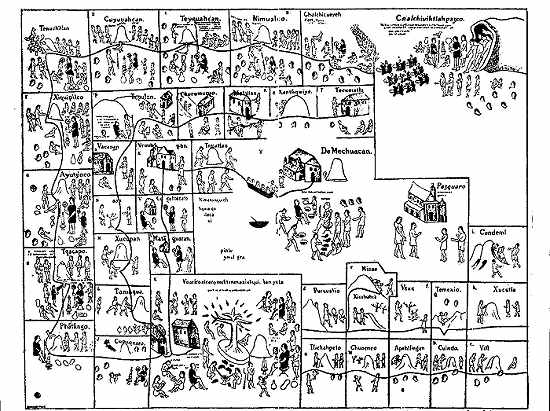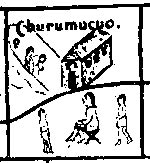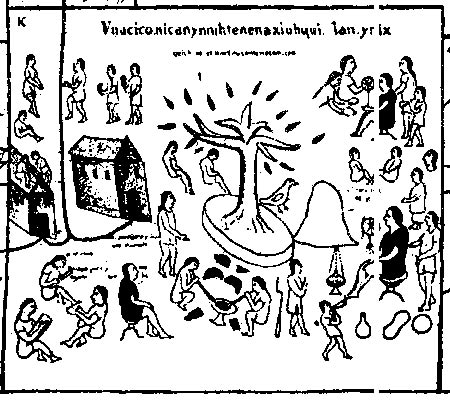Did You Know…?
As they explored the New World, the early conquistadors were spurred on by the possibility of finding treasure and riches. Captive Indians told convincing stories of cities far to the north even more fabulous than the Aztec capital Tenochtitlan. The Spaniards’ greed was sufficient to fuel determined drives into ever more remote territory in the hopes of striking it rich.

The Aztecs certainly had lots of gold, but nowhere near as much as the conquistadors believed. It turned out that all that glittered was not necessarily gold – much of it was an alloy called tumbaga.
The metallurgical skills of the pre-Columbian Indians went unrecognized for centuries prior to the pioneering work of Dora M. K. de Grinberg and others in the past fifty years or so. De Grinberg, an Argentinian archeologist working in Mexico, doggedly followed tenuous leads to uncover ample evidence that the ancient Indian metalworkers were far more knowledgeable than had previously been supposed.
The conventional wisdom was that pre-Columbian tribes worked only gold, copper and platinum found in their native state (i.e. almost pure, and not requiring any smelting). In addition, it was accepted that some groups knew how to take advantage of any rich ores found in placer deposits in streams. But it was rarefor anyone to suggest that the Indians had their own underground mines, or knew how to control the mix of metals required for the production of alloys.
De Grinberg became interested in the drawings on one particular piece of cotton cloth, about 3 meters in length, which dated back to sometime in the mid-16th century. The drawings, using black and red pigments, provided historical information in a series of scenes, linked together by lines, which archaeologists believed represented routes. Each drawing was of a distinct place, only some of which could be identified with certainty at the time de Grinberg took up the challenge. All the known places were in the state of Michoacán. De Grinberg thought that many of the drawings in this codex (now known as the Lienzo de Jicalán) showed activities connected with mineral exploitation, and that the routes were mining routes. But how could she prove it?

She guessed that the codex might have been produced to accompany the report about copper working commissioned in 1533 by Vasco de Quiroga. This written report about copper working still exists, and some details appeared to support de Grinberg’s hunch. As Bishop of Michoacán, Vasco de Quiroga went on to encourage the manufacture of handicrafts in the villages of the state, promoting the idea that each village develop specialist skills in one craft or another. Santa Clara, for example, became the center for all things copper, and remains so today.

Village and mine
The history of the Lienzo de Jicalán is somewhat murky. It is believed that it was stolen, early on, by a Luisa Magaña, who then gave it to Pablo García in payment of a medical debt. Later, it was stored in the church of Jucutacato, a tiny village west of Uruapan. It is still sometimes referred to as the Lienzo of Jucutacato. The lienzo was first exhibited in public, in the state capital Morelia, during the first state exhibition in 1877. It later passed into the hands of the Mexican Society for Geography and Statistics, based in Mexico City. Following restoration work by the National History and Archaeology Institute (INAH), it was displayed for several years in the Regional Museum in Morelia, before being returned once more to Mexico City. Michoacán state authorities want it returned permanently to their state to ensure its safe keeping.
De Grinberg used a combination of field archaeology and clues from the Lienzo de Jicalán to unravel the mystery surrounding some of the locations it depicts. This enabled her, for instance, to locate the previously unknown Churumucuo very precisely, in the hills overlooking the Infiernillo reservoir in southern Michoacán. She was able to find the mine depicted in the rear left of the picture. Further studies suggested that a single mining locality with twenty workers could produce about 1800 kilograms of copper every (pre-Columbian) month of twenty days.

The main drawing in the lienzo depicts a settlement called Xiuhquilan, shown as the focal point of five separate routes, each linking a string of villages. This picture shows the smelting process clearly. Workers squat on either side of a fire and use long pipes to oxygenate the fire to ensure high temperatures. Xiuhquilan is now identified with Jicalán el Viejo, an unrestored archaeological site a few kilometers south of Uruapan. The lienzo suggests that the founders of Xiuhquilan were not Purépecha (Tarascan) Indians, but Náhuatl-speaking Toltecs, who migrated into the area from somewhere far to the east. After the village was subsumed into the Tarascan Empire in the late 15th century, it had to send regular tributes of painted gourds and copper items to its new masters.
The lienzo reveals that Xiuhquilan’s indigenous leaders held authority over several mineral deposits, sources of the copper ore essential to support the settlement’s main economic activity of copper-smelting. Three of the lienzo’s five routes link the town to copper mines. The first of these routes leads southeast towards the headwaters of the River Balsas. The second heads south for the vicinity of what is today the Infiernillo dam, on the highway from Uruapan to Lázaro Cárdenas. The third route goes southwest to the Pinzándaro region, on the banks of the River Tepalcatepec.
These metal-working Indians were extremely skilled. It is well known that it is much harder to work and shape copper than it is gold. The Indians not only knew to melt and hammer native metals into shape, they also knew how to locate ores, mine them (by open pit or shaft mining as appropriate) and smelt them. By 900 AD they knew how to reduce both carbonates (a relatively easy process) and sulfates (a much harder one) in order to extract the metals.
Metallurgical tests of artifacts and slag from waste tips have shown that the Indians of Michoacán even produced several alloys of copper, and were able to color them. These alloys included various bronzes and tumbaga, a mix of gold with copper and usually some silver. Tumbaga looks just like gold, leading the Spaniards to believe that there was far more gold than there really was. The rest, as they say, is history…
Sources
- Krasnopolsky de Grinberg, Dora M. Los señores del metal. Minería y metalurgia en Mesoamérica. Consejo nacional para la cultura y las artes, Pangea. 1990.
- Krasnopolsky de Grinberg, Dora M. “¿Qué sabían de fundición los antiguos habitantes de Mesoamérica?” Ingenierías, Enero-marzo 2004, Vol VII, No. 22 pp 64-70.
- Marquez, Carlos F. “Gestionarán que el lienzo de Jucutacato sea resguardado en el estado”. La Jornada Michoacana, Nov 9, 2005.
- Once, Grecia. “El Lienzo de Jucutacato, testigo de la historia.” Cambio de Michoacán. Oct 30, 2006.
- Pre-Hispanic and Colonial Metallurgy in Jicalán, Michoacán, México: An Archaeological Survey , with contributions by: Mario Retiz, Anyul Cuellar, and Efraín Cárdenas. Report submitted to FAMSI (Foundation for the Advancement of Mesoamerican Studies Inc.) Research year 2003.
